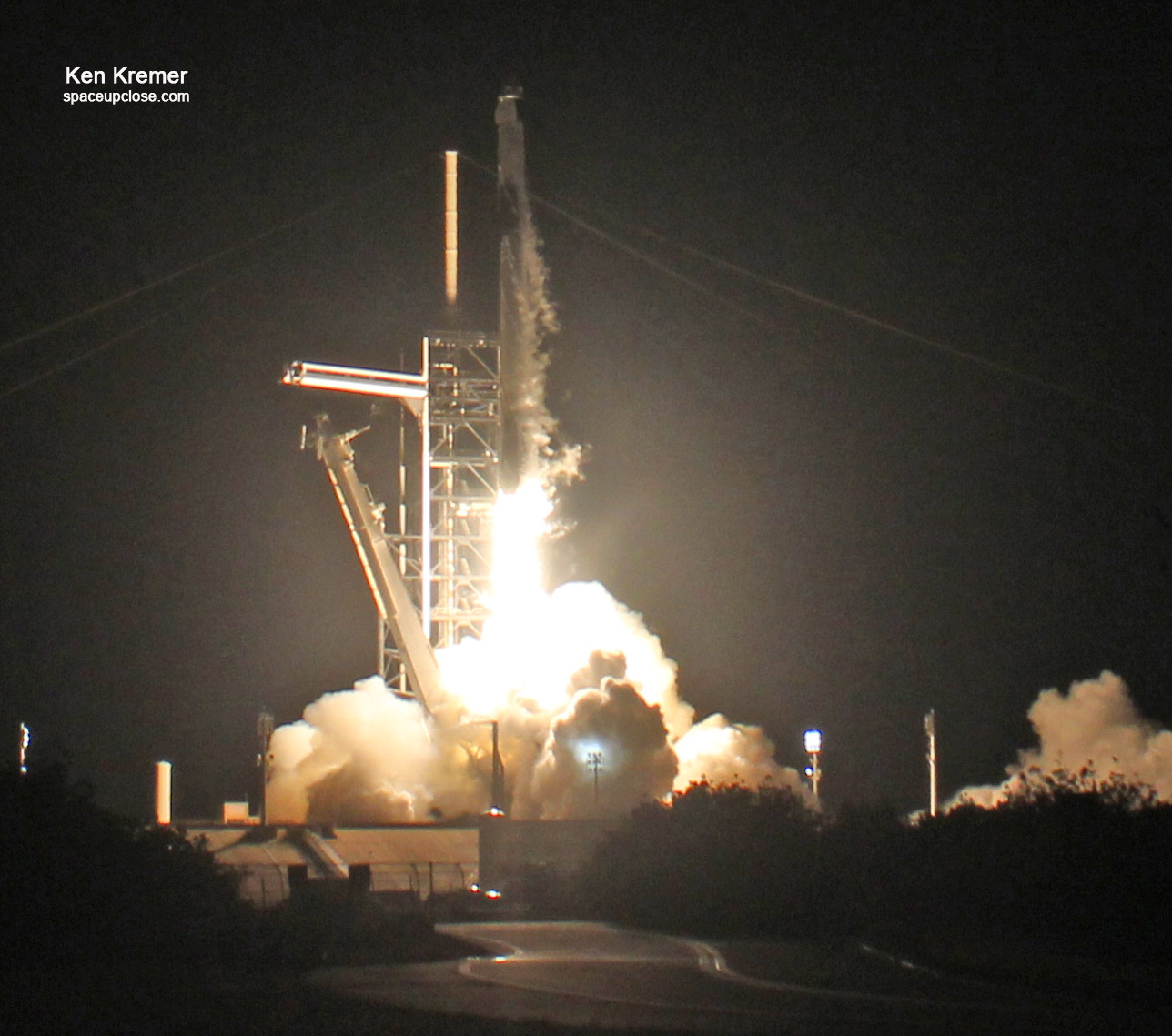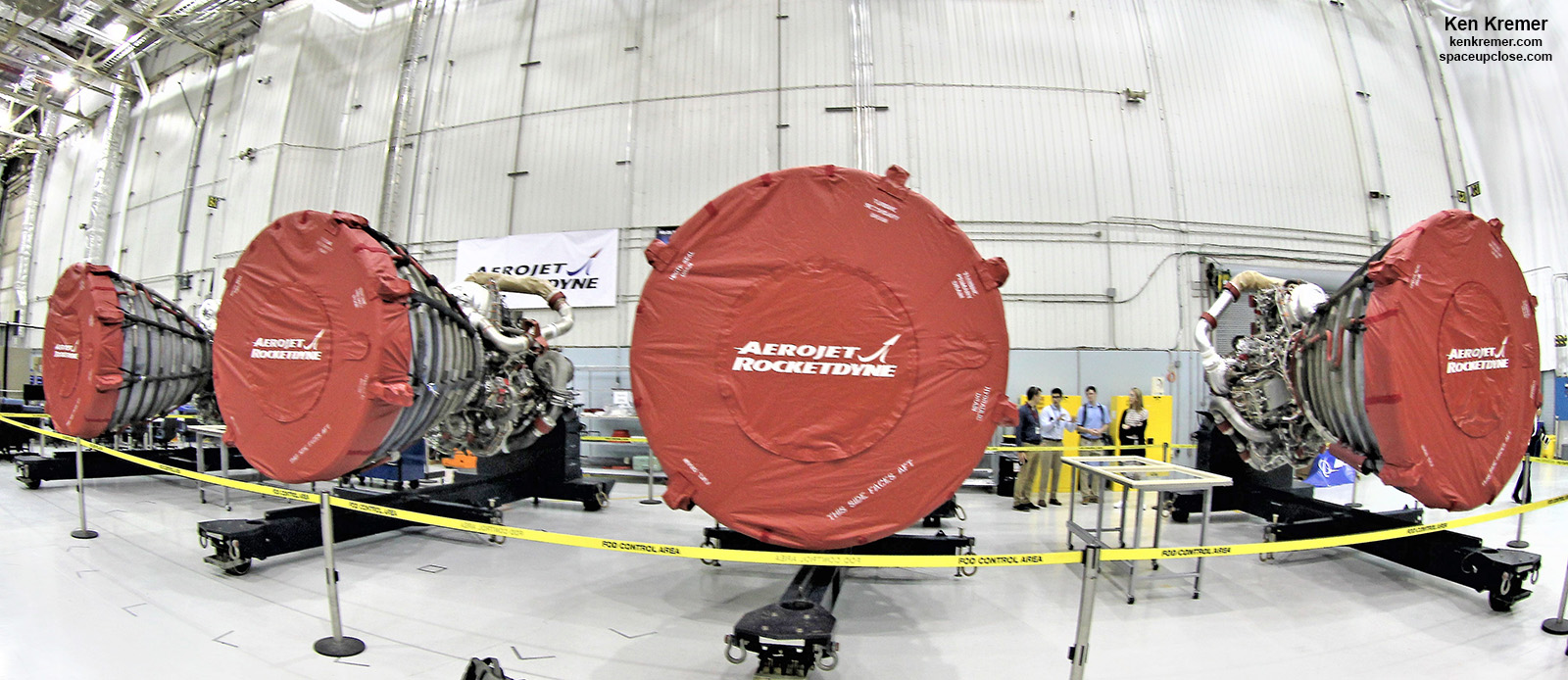
For SpaceUpClose.com & RocketSTEM
CAPE CANAVERAL, FL – On the heels of awarding contracts to a trio of U.S. companies to design and develop the critical human landing system under NASA’s Artemis moon landing program, the agency has announced a contract award to purchase all the additional rocket engines to power four more missions of the Space Launch System (SLS) megarocket that will propel NASA astronauts to the Moon later this decade.
“NASA has awarded a contract to Aerojet Rocketdyne of Sacramento, California, to manufacture 18 additional Space Launch System (SLS) RS-25 rocket engines to support Artemis missions to the Moon,” NASA officials announced via press release.
Four RS-25 engines each are required to power the 212 foot tall core stage at the base of the SLS.
Altogether they provide a total of 2 million pounds of thrust to send SLS to space.
Aerojet Rocketdyne of Sacramento, California has manufactured all RS-25 engines to date – which previously powered NASA’s Space Shuttle orbiters to low Earth orbit for three decades.
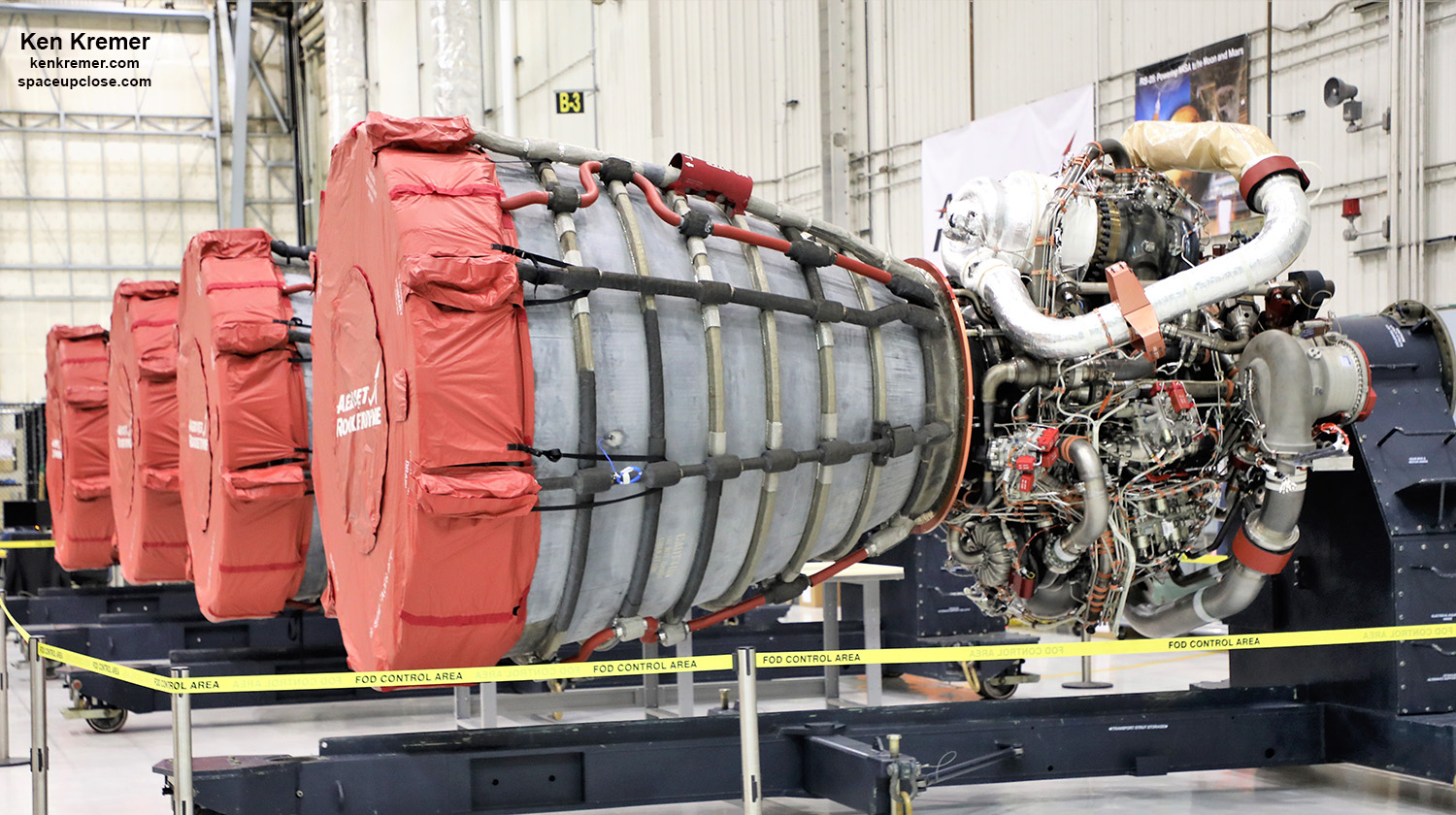
This follow-on contract is valued at $1.79 billion and “includes labor to build and test the engines, produce tooling and support SLS flights powered by the engines.”
That works out to a cost of about $100 million for each new RS-25 engine.
This new contract is an addition to the initial contract awarded in November 2015 to recertify and produce six new RS-25 engines.
Thus overall Aerojet Rocketdyne will manufacture a total of 24 new RS-25 engines to support as many as six additional SLS flights through the end of this decade.
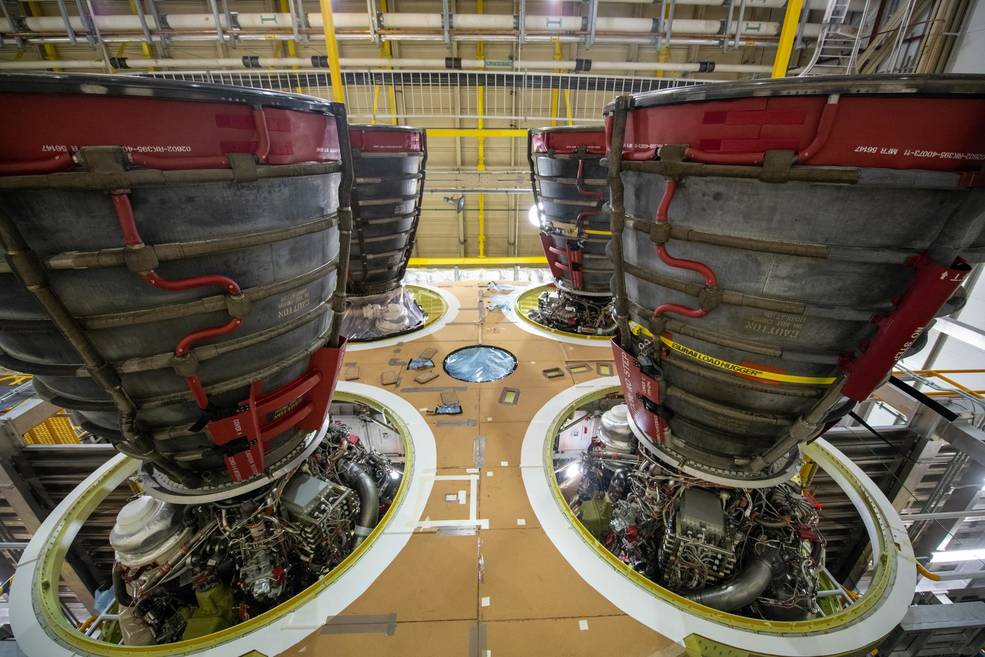
The overall contract is valued at almost $3.5 billion through Sept. 30, 2029.
Whereas the RS-25 engines were reusable for all 135 NASA space shuttle missions, these newly manufactured engines will each be single use and discarded when the core stage propellant is consumed during the eight minute climb to orbit.
“This contract allows NASA to work with Aerojet Rocketdyne to build the rocket engines needed for future missions,” said John Honeycutt, the SLS program manager at NASA’s Marshall Space Flight Center in Huntsville, Alabama.
“The same reliable engines that launched more than 100 space shuttle missions have been modified to be even more powerful to launch the next astronauts who will set foot on the lunar surface during the Artemis missions.”
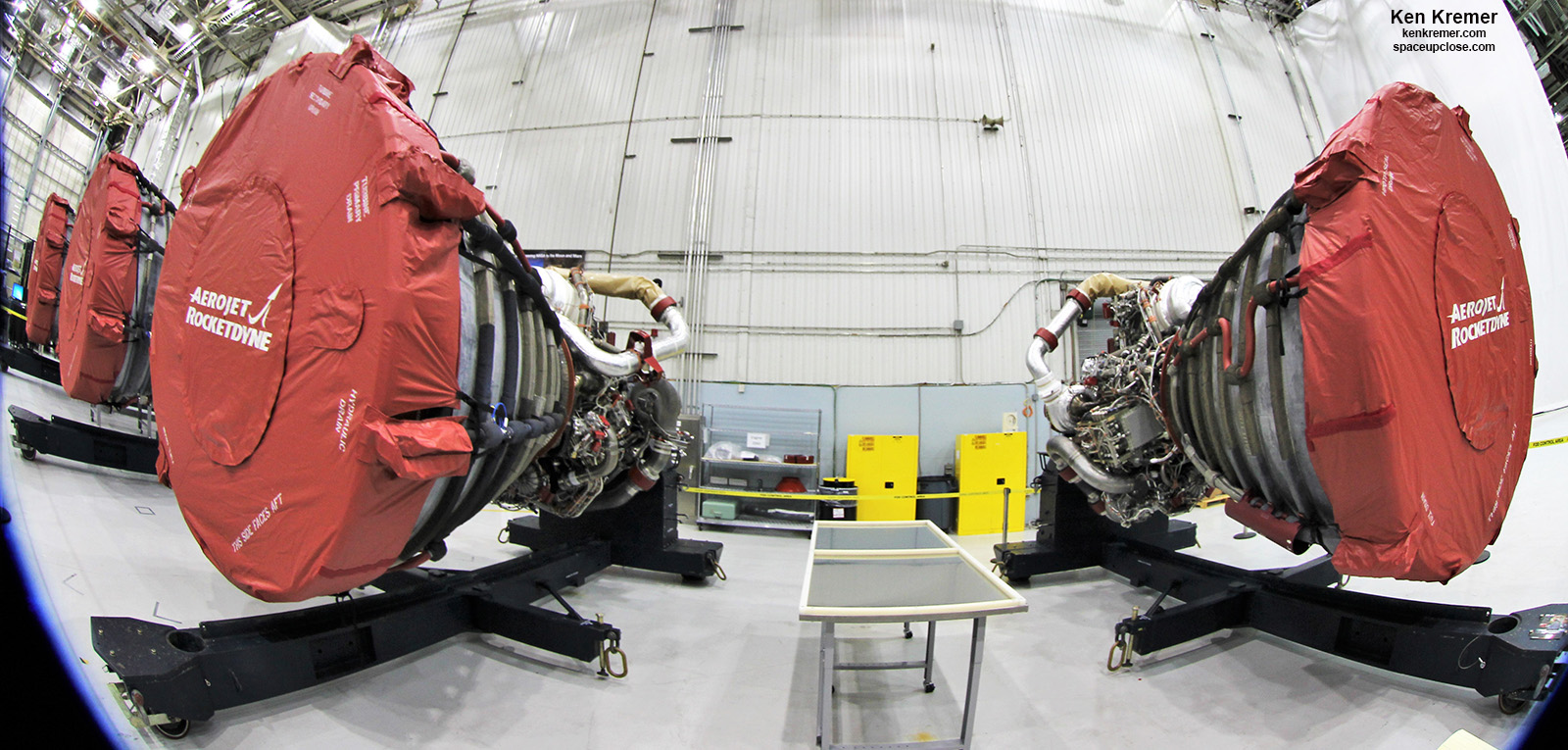
The RS-25s have been upgraded in several ways to fire at a higher thrust (109%) and with a new digital brain controller.
NASA’s goal under Project Artemis is to land the first woman and next man on the lunar south pole surface by 2024 during the Artemis 3 mission when a crew of astronauts will launch in the Orion Crew Capsule atop the mammoth Space Launch System rocket – currently under development by NASA.
The SLS rocket and Orion Crew Capsule have been under development for a decade.
The SLS core stage, built at NASA’s Michoud Assembly Facility in New Orleans, is the largest rocket stage the agency has built since the Saturn V that sent Apollo astronauts to the Moon.
Altogether the core stage will produce a combined 2 million pounds of thrust powered by the four RS-25 engines fueled by liquid hydrogen and liquid oxygen.
The RS-25 engines along with two side mounted solid rocket boosters provide the necessary thrust for the SLS rocket to reach space and propel the Orion deep space capsule and our astronauts to the Moon.
Launch of the first liquid-fueled SLS on the uncrewed Artemis 1 test flight with the Orion deep space capsule around the Moon could take place as soon as mid to late 2021.
The overall goal is to build the megarockets for NASA’s Artemis moon exploration program that will enable landing US astronauts including the first woman and the next man on the Moon by 2024 at the lunar south pole.
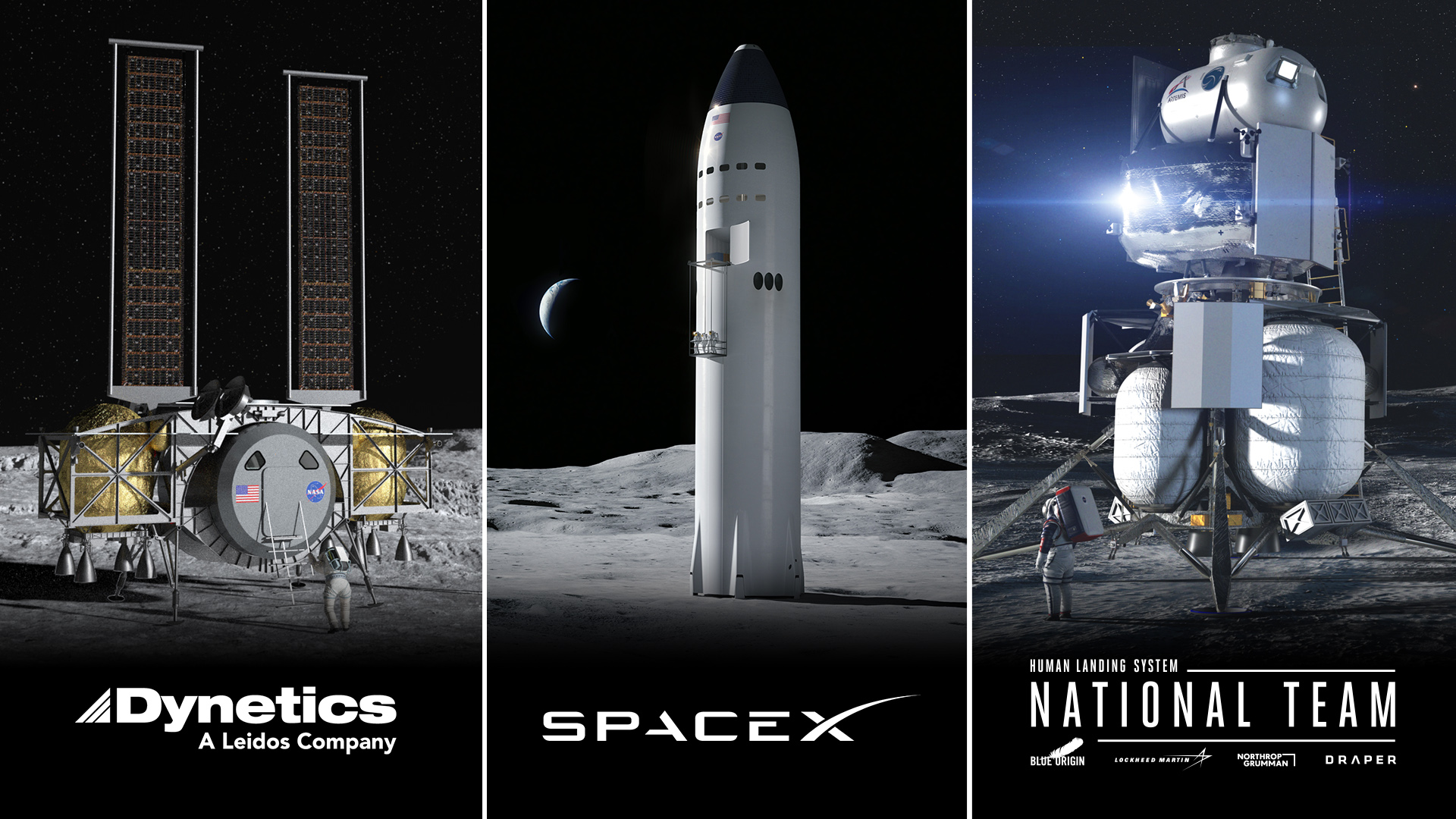
Watch my commentary about Project Artemis and human landers, COV-19 and more during my May 1 interview at the American Space Museum:
https://www.facebook.com/SpaceWalkOfFame/videos/232100138011357/
Watch Ken’s continuing reports about Artemis and onsite for live reporting of upcoming and recent SpaceX and ULA launches including Starlink, Solar Orbiter, In-Flight Abort, Mars 2020 and more at the Kennedy Space Center and Cape Canaveral Air Force Station.
Stay tuned here for Ken’s continuing Earth and Planetary science and human spaceflight news: www.kenkremer.com –www.spaceupclose.com – twitter @ken_kremer – email: ken at kenkremer.com
Dr. Kremer is a research scientist and journalist based in the KSC area, active in outreach and interviewed regularly on TV and radio about space topics.
………….
Ken’s photos are for sale and he is available for lectures and outreach events



